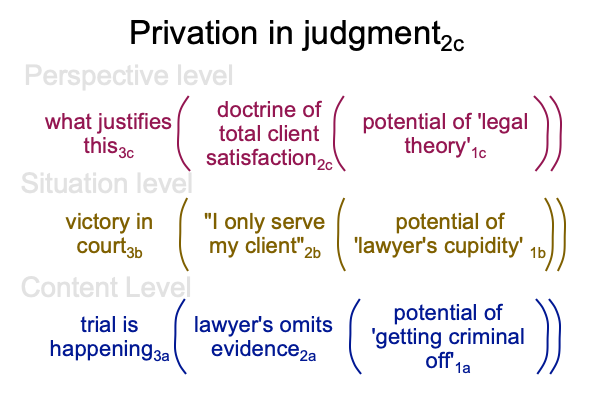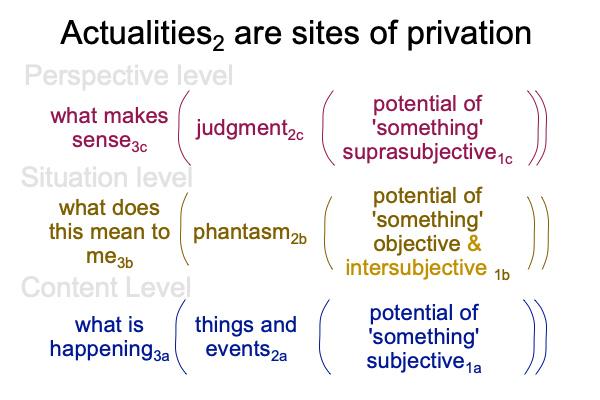Looking at Kirk Kanzelberger’s Essay (2020) “Reality and the Meaning of Evil” (Part 15 of 18)
0060 In sections four and five, Kanzelberger pulls more threads through the loops of Poinsot’s scholasticism and Peirce’s postmodernism. He does so well, that I continue in parallel, like a harmony to his melody.
0061 I turn to privation of judgment2c.
Consider an example.
0061 Crooked lawyers love the sin of omission. They love to omit the evidence that would cause them to lose the case. This love is justified by the doctrine of total satisfaction for the client. The crooked lawyer does not serve justice. The crooked lawyer serves only his client, even when his client is guilty as charged.
In the domain of morals, the doctrine of total client satisfaction stands in opposition to an oath to serve justice. Lawyers take an oath to serve justice. This doctrine deprives the oath of its merit. Evil is a privation of good.
Legal theory contextualizes a lawyer’s cupidity, even as the lawyer’s exploits defy the attainment of justice.
0061 Is there a hierarchy here?
Crime is what happened3a. A trial is what is happening3a. Victory in court is what it means to me3b. Someone really depraved constructs the legal process that permits it all3c.
There is a hierarchical difference between a corrupt lawyer3b, who objectifies what is happening3a in the pursuit of total victory for his client1a, and a legal theorist3c, who formulates the consensus of what is legally permissible1c. Legal theorists3c fashion suprasubjective entities, concocting law-determining judgments2c that alter, tweak, nudge, correct and re-configure the intersubjectivity2b within which a moral agent3b signifies. Legal theorists3c alter the machinery of justice2c. Evil ex academia1c.
The well-educated cutting-edge legal theorist3c offers norms2c that may oppose the rule of reason and the divine law1c, just as parody opposes tragedy. The projection of alternate meaning into words1c, such as “client interests”, “service”, “mandates” and so on, mocks the hard-won projection of true meaning1c, where the client’s interests do not outweigh justice and true justice ultimately furthers the interests of us all, including the client.
0062 Here is a picture.


